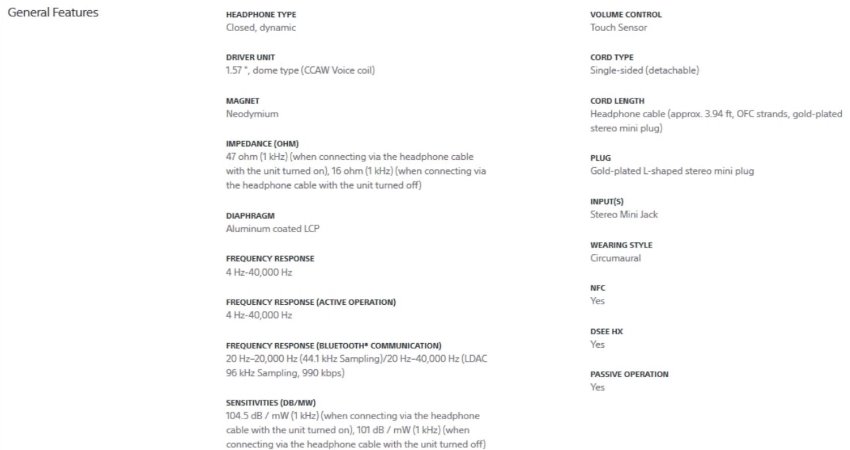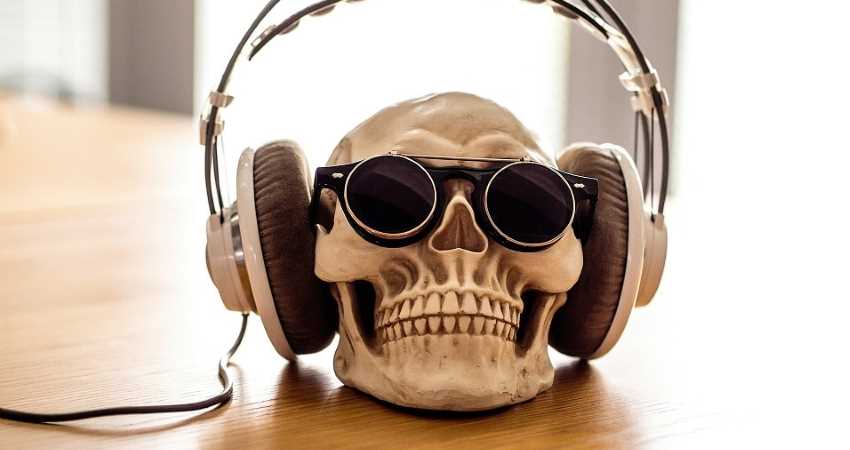There is always a feature that separates the “good” from the “better” and the “better” from the “best.” Certain features make all the difference between products of a particular brand and between products that perform the same function.
Just because you’re looking for a particular feature doesn’t mean you shouldn’t consider the other components. This does not mean that the basics should be overlooked because you are looking for that distinctive feature.
For example, if you were to buy a pair of running shoes, your first thought would not be the color or the fancy look of the shoes. You would look for key features like the sole design, as it determines how well the shoe grips the road when you run. It’s also the same, if not more difficult, when looking for certain products like headphones. This is important because the basic features of headphones are what help a buyer determine which products to buy.
This article aims to highlight some of the technical features of headphones to make an informed decision. These features are listed in order of importance and are as follows:

1. Headphone Drivers
This is a very important aspect, if not one of the most important, when choosing a headset. The driver of a headset is the element that transmits electrical/audio signals and converts them into audible sound waves for the listener. Drivers are usually made up of magnets, a wire/coil, and a membrane/diaphragm.
Electrical signals cause the diaphragm to vibrate, and these vibrations cause sound waves that are audible to the listener. Manufacturers usually specify the diameter of the drivers used in the production of headphones measured in millimeters. It is generally considered that the larger the driver’s diameter, the better the sound quality produced. This is especially important for low tones.
The diameter of the speaker is also crucial when it comes to the type of headphones. For example, suppose it is an over-ear headset. In that case, a speaker of at least 40 mm is considered the best choice, while for in-ear headphones, an approach called “dual driver” is used (which simply means that more than one driver is used, usually two; one for medium and high sound waves while the other is used for bass and low sound waves).
Similarly, the type of connector used is as important as the speakers used. Manufacturers most frequently use materials such as stainless steel, gold, chrome, and bronze. The type of material used determines the quality of the electrical conduction that occurs.
2. Sensitivity/Sound Pressure
Ideally, headphones are made with good sound sensitivity. This is what the term “sensitivity” means: the ability of the headphones to detect sound, even at the smallest change/volume. This term is used interchangeably by manufacturers with sound pressure. They are used to indicate how loud the headphones can be. Sound pressure levels are used to measure the sensitivity of headphones, usually stated in decibels per milliwatt (dB/mW). In contrast, sensitivity indicates how efficiently an electrical signal is converted into a sound wave.
To better understand this concept as it relates to different sound levels, I will give some examples. Normal car traffic is about 81 dB, a loud scream or voice is about 107 dB, while a plane taking off is about 132 dB. Most headphones are manufactured in the range of 85 to 120 dB/mW sound pressure level. The Occupational Safety and Health Administration postulates that the pain threshold for sound is around 120dB, so listeners are generally warned of the dangers of prolonged exposure to sound above 85dB, as this can lead to hearing loss and ear canal cancer.
Sensitivity also affects volume as a function of resistance. Higher sensitivity and lower resistance give a higher volume, although this means that there may be some extra noise (perhaps from the amplifier, etc.). This extra noise will only be heard when there is no music playing, so it may be noticed. Nevertheless, headphones with higher sensitivity are generally considered louder.
3. Impedance (Electrical Resistance)
Most headphones operate on electromagnetism. So it’s important to understand how electrical resistance (or impedance) affects sound quality and the type of headphones you’re about to buy. Impedance is measured in Ohms and affects the power of headphones in that the higher the resistance, the more power is used to power the headphones.
4. Frequency Response
Frequency response is a term used to indicate the range of sound frequencies that headphones can produce. Frequency response is usually measured in Hertz (Hz), with the higher number representing the frequency that produces high notes (usually indicated as “Bright”) and the lower number indicating the amount of bass produced (usually indicated as “Dark”). Most headphones have a stated frequency that corresponds to human hearing frequency, usually between 20 and 20,000 Hz.
In simpler terms, the frequency response is a graph of volume as a function of frequency:

The graph of a frequency response curve doesn’t really translate into good sound quality, but the frequency response is important in that it helps you choose the type of headphones you need for a particular type of music. So if you want to listen to music with a lot of basses, choose headphones that support low frequencies.
It’s important to note that the frequency response of headphones is always wavy at the higher frequencies, so the notes produced by the headphones may sound a little sharp at those frequencies. But most headphones don’t have much difference between high and low frequencies.
How to choose headphones based on their frequency response?
Choose the type of headphones that interest you, for example, IEMs or monitor headphones. Determine the type of sound you want to get, the sound signature you prefer (warm, bright, “V” shaped, balanced, smooth, dark, etc.). And finally, look at the frequency response.
- If you want bass: Look for ones that emphasize low frequencies and fall late into the deep bass.
- If you need headphones for singing, look for ones that emphasize the mid-range frequencies, so there’s no big rise and fall.
- If you like trebles, look for headphones with good extension in the higher frequencies that decays slowly or is more or less flat in that section.
Where do you find the frequency response of the headphones?
5. Total Harmonic Distortion (THD) and Noise
This characteristic is sometimes divided into THD and noise. Noise characteristics are usually noise isolation and/or noise cancellation. While THD refers to the amount of distortion, noise factors refer to the amount of noise the headphones can accommodate or prevent. THD indicates the distortion of the sound, usually when the headphones are used at a high volume.
Headphones generally produce sound through vibrations of the speaker diaphragm; however, at high volumes, the diaphragm may not vibrate fast enough, resulting in sound distortion. Total Harmonic Distortion is often expressed as a percentage. The lower the THD, the better the quality of the headphones. Most headphones have a THD of 1%, or even less, for high-end products.
- Noise isolation refers to the ability of the headphones to block out external sound. This ability is found in on-ear, closed-back, and in-ear headphones, as they typically seal the ear canal during use. That’s why it’s important to use the correct size ear tips when using in-ear headphones. Noise isolation is not limited to frequencies and does not require external power. It is passive and appears in more affordable products.
- Noise cancellation, on the other hand, is a bit more technical than noise isolation. Noise cancellation is the ability of the headset to trap sound, create a reverse wave and send it back into the headset through built-in microphones and a DSP microchip. This feedback is what effectively cancels out the sound. Noise cancellation is very effective for low frequencies, less effective for medium frequencies, and not effective for high frequencies. This means that you can still hear high-frequency sounds while your headphones cancel out low-frequency sounds. It is necessary to mention that noise cancellation often requires a battery, and its overall effectiveness is variable.
Most of these technical characteristics are indicated on the product box. However, manufacturers have their own measurement standards, even though these standards usually mean the same thing, yet carry different units.
And if the above specs seem too technical, remember that when you buy headphones, one of the most important factors to consider is the diameter of the speaker (the main component of the headphones), how well it can sound in terms of notes (how much bass it can produce and vice versa), how much power it will need to work, and how well the headphones can block out sound.
With all of this information at hand, you can buy a new pair of headphones like a pro because you now understand the device’s technical specifications.
